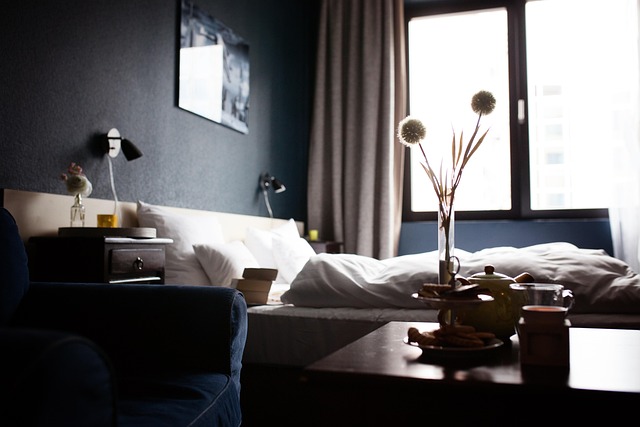Enhancing Your Home's Aesthetics and Functionality with Blinds and Curtains
Window treatments play a crucial role in home décor, offering both style and practicality. Blinds and curtains are two popular options that can dramatically transform the look and feel of any room while providing essential light control and privacy. This article explores the various aspects of blinds and curtains, helping you make informed decisions for your home's interior design.

One of the key advantages of blinds is their versatility. They come in various materials, including wood, faux wood, aluminum, and fabric, allowing you to choose an option that complements your interior design. Blinds are also relatively easy to clean and maintain, making them a practical choice for busy households.
How do curtains enhance your home’s interior?
Curtains add a touch of elegance and softness to any room, creating a warm and inviting atmosphere. They come in an endless variety of fabrics, patterns, and colors, allowing you to express your personal style and complement your existing décor. Curtains can be used to frame windows, add height to a room, or create the illusion of larger windows.
Beyond their aesthetic appeal, curtains offer excellent insulation properties. They can help keep your home cooler in summer and warmer in winter, potentially reducing your energy bills. Curtains also provide superior light blocking capabilities, making them ideal for bedrooms or media rooms where darkness is desired.
What are the different types of window shades available?
Window shades come in various styles, each offering unique benefits for your home. Roller shades are a popular choice for their simplicity and clean lines. They roll up neatly when opened, making them ideal for minimalist interiors. Roman shades, on the other hand, fold up in elegant pleats, adding a touch of sophistication to any room.
Cellular or honeycomb shades are known for their excellent insulation properties. Their unique structure traps air, creating a barrier against heat and cold. This makes them an energy-efficient option for homes in extreme climates. For those seeking a natural look, woven wood shades offer a rustic charm and can add texture to your interior design.
How can blinds and curtains work together in your home?
Combining blinds and curtains can create a layered look that offers both functionality and style. This approach allows you to enjoy the light control of blinds while benefiting from the softness and insulation of curtains. For example, you might use sleek blinds for everyday light adjustment and add decorative curtains to frame the window and enhance the room’s aesthetic.
When pairing blinds and curtains, consider complementary colors and textures. You might choose neutral-colored blinds and add bold, patterned curtains for a pop of color, or opt for textured curtains to contrast with smooth, modern blinds. This combination also offers maximum flexibility in terms of privacy and light control, allowing you to create the perfect ambiance for any time of day.
What factors should you consider when choosing window treatments?
When selecting blinds or curtains for your home, several factors come into play. First, consider the room’s function and your privacy needs. Bedrooms and bathrooms might require more opaque options, while living areas could benefit from sheer treatments that allow natural light to filter through.
Light control is another crucial factor. Think about how much sunlight the room receives and at what times of day. This will help you determine whether you need blackout curtains, light-filtering shades, or adjustable blinds. Additionally, consider the room’s overall style and color scheme to ensure your window treatments complement the existing décor.
How do blinds and curtains impact energy efficiency in your home?
| Window Treatment | Insulation Value | Light Control | Energy Saving Potential |
|---|---|---|---|
| Cellular Shades | High | Good | Up to 20% on heating/cooling |
| Blackout Curtains | High | Excellent | Up to 25% on heating/cooling |
| Wooden Blinds | Moderate | Good | Up to 15% on heating/cooling |
| Roller Shades | Low to Moderate | Variable | Up to 10% on heating/cooling |
Prices, rates, or cost estimates mentioned in this article are based on the latest available information but may change over time. Independent research is advised before making financial decisions.
Both blinds and curtains can significantly impact your home’s energy efficiency. Properly installed window treatments can reduce heat gain in summer and heat loss in winter, leading to lower energy bills. Cellular shades, with their insulating air pockets, are particularly effective at maintaining indoor temperatures.
Blackout curtains, especially those with thermal lining, can provide excellent insulation. They’re particularly useful in rooms that receive direct sunlight, as they can block heat during summer months. In winter, these same curtains can help retain warmth inside the room.
Choosing the right window treatments and using them effectively can lead to noticeable improvements in your home’s energy efficiency. For instance, opening curtains or blinds during sunny winter days allows natural heat to warm your home, while closing them at night helps retain that heat.
In conclusion, blinds and curtains offer a wide range of options for enhancing your home’s interior design while providing practical benefits such as privacy, light control, and energy efficiency. By carefully considering your needs and preferences, you can select window treatments that not only beautify your home but also improve its functionality and comfort.






